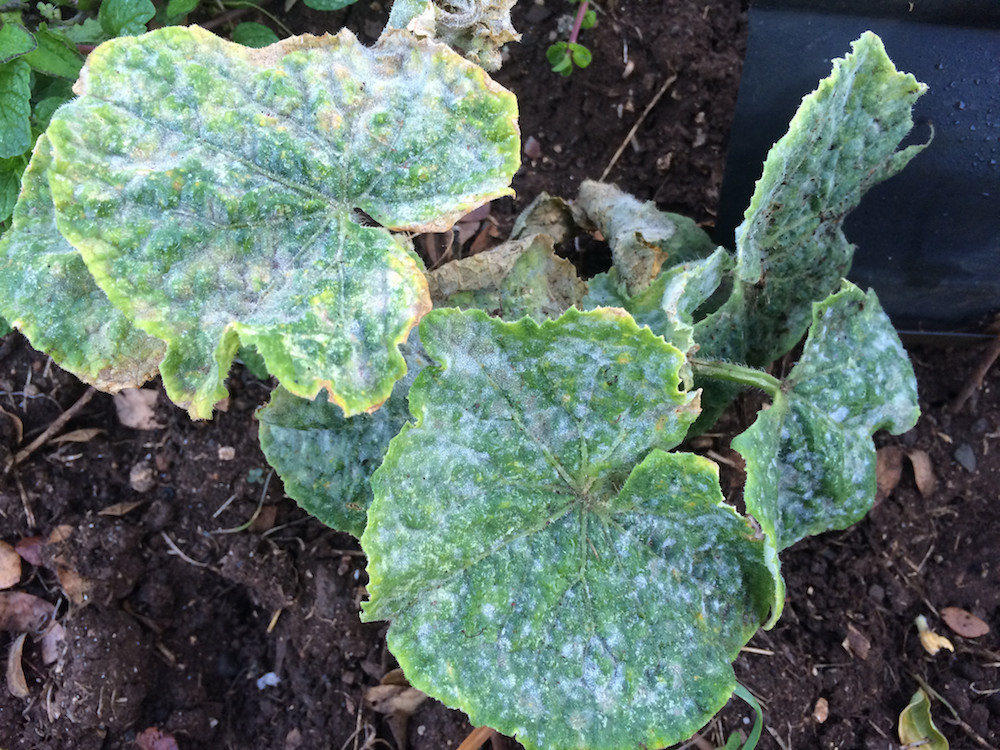
Powdery Mildew
Podosphaera Xanthii
Pathogen:
Fungus
Type:
Risk:
INTERMEDIATE




DESCRIPTION
Pathogen description
Podosphaera xanthii is a fungus that causes powdery mildew, a fungal disease that affects a variety of plants, including cucurbits such as pumpkins, zucchini, cucumbers and melons. Powdery mildew is one of the most common and devastating diseases in cucurbit crops, characterized by white mycelial growth on the leaves, stems and fruits of infected plants. This fungus can significantly reduce the yield and quality of crops, especially under conditions of high humidity and moderate temperatures.
Disease description
In cucurbits, powdery mildew causes a series of easily recognizable symptoms. These include the formation of a white or grayish powder on the tops and undersides of leaves, as well as on stems and fruits. Additionally, yellow Taches can be observed on infected leaves, which may become necrotic over time. In severe cases, the disease can affect the growth and development of plants, causing deformation of fruits and reduced yield.

TEMPERATURE AND HUMIDITY
20°C - 25°C
50% - 90%

VOIES DE TRANSMISSION
Wind, direct contact with infected plants, spread of spores by splashing water, contaminated cultivation tools.

Chemical treatments
CONTROL
• ORANGE OIL 6% [SL] P/V
• ORANGE OIL 60g/L [ME] P/S
• AZOXISTROBIN 12% + TEBUCONAZOLE 20% [SC] P/V
• AZOXISTROBIN 25% [SC] P/V
• SULFUR 80% [SC] P/V
• SULFUR 80% [WG] P/P
• SULFUR 80% [WP] P/P
• SULFUR 82.5% [SC] P/V
• BUPIRIMATE 25% [EC] P/V
• CIFLUFENAMID 10% [SC] P/V
• COS-OGA 1.25% [SL] P/V
• DIFENOCONAZOLE 12.5% + CYFLUFENAMIDE 1.5% [DC] P/V
• EUGENOL 3.3% + GERANIOL 6.6% + THYMOL 6.6% [CS] P/V
• TEA TREE EXTRACT (MELALEUCA ALTERNIFOLIA) 22.25% [EC] P/V
• FLUXAPYROXAD 7.5% + DIFENOCONAZOLE 5% [SC] P/V
• POTASSIUM HYDROGEN CARBONATE 85% [SP] P/P
• POTASSIUM HYDROGEN CARBONATE 99% [SP] P/P
• MEPTYLDINOCAP 35% [EC] P/V
• METRAPHENONE 50% [SC] P/V
• Penconazole 10% [EC] P/V
• PENCONAZOLE 20% [EW] P/V
• TEBUCONAZOLE 20% [EW] P/V
• TEBUCONAZOLE 25% [EW] P/V
• TEBUCONAZOLE 25% [WG] P/P
• TETRACONAZOLE 10% [EC] P/V
• TETRACONAZOLE 12.5% [ME] P/V
• TETRACONAZOLE 4% [ME] P/V
Treatments authorized in organic farming
• ORANGE OIL 6% [SL] P/V
• ORANGE OIL 60g/L [ME] P/S
• SULFUR 80% [SC] P/V
• SULFUR 80% [WG] P/P
• SULFUR 80% [WP] P/P
• SULFUR 82.5% [SC] P/V
• COS-OGA 1.25% [SL] P/V
• EUGENOL 3.3% + GERANIOL 6.6% + THYMOL 6.6% [CS] P/V
• TEA TREE EXTRACT (MELALEUCA ALTERNIFOLIA) 22.25% [EC] P/V
• POTASSIUM HYDROGEN CARBONATE 85% [SP] P/P
• POTASSIUM HYDROGEN CARBONATE 99% [SP] P/P
Biological control
• AMPELOMICES QUISQUALIS 58% [WG] P/P
• BACILLUS AMYLOLIQUEFACIENS (strain FZB24) 13% [WP] P/P
• BACILLUS AMYLOLIQUEFACIENS (subsp. plantarum, strain D747) 25% [WG] P/P
• Bacillus pumilus strain QST 2808 (1x10E9 CFU/g) 14.35g/L [SC] P/V
• PYTHIUM OLIGANDRUM (strain M1) 17.5% [WP] P/P
Preventive treatments
• AMPELOMICES QUISQUALIS 58% [WG] P/P
• AZOXISTROBIN 12% + TEBUCONAZOLE 20% [SC] P/V
• AZOXISTROBIN 25% [SC] P/V
• SULFUR 80% [SC] P/V
• SULFUR 80% [WG] P/P
• SULFUR 80% [WP] P/P
• SULFUR 82.5% [SC] P/V
• BACILLUS AMYLOLIQUEFACIENS (strain FZB24) 13% [WP] P/P
• BACILLUS AMYLOLIQUEFACIENS (subsp. plantarum, strain D747) 25% [WG] P/P
• Bacillus pumilus strain QST 2808 (1x10E9 CFU/g) 14.35g/L [SC] P/V
• BUPIRIMATE 25% [EC] P/V
• CIFLUFENAMID 10% [SC] P/V
• DIFENOCONAZOLE 12.5% + CYFLUFENAMIDE 1.5% [DC] P/V
• EUGENOL 3.3% + GERANIOL 6.6% + THYMOL 6.6% [CS] P/V
• TEA TREE EXTRACT (MELALEUCA ALTERNIFOLIA) 22.25% [EC] P/V
• FLUXAPYROXAD 7.5% + DIFENOCONAZOLE 5% [SC] P/V
• POTASSIUM HYDROGEN CARBONATE 85% [SP] P/P
• POTASSIUM HYDROGEN CARBONATE 99% [SP] P/P
• MEPTYLDINOCAP 35% [EC] P/V
• METRAPHENONE 50% [SC] P/V
• Penconazole 10% [EC] P/V
• PENCONAZOLE 20% [EW] P/V
• PYTHIUM OLIGANDRUM (strain M1) 17.5% [WP] P/P
• TEBUCONAZOLE 20% [EW] P/V
• TEBUCONAZOLE 25% [EW] P/V
• TEBUCONAZOLE 25% [WG] P/P
• TETRACONAZOLE 10% [EC] P/V
• TETRACONAZOLE 12.5% [ME] P/V
• TETRACONAZOLE 4% [ME] P/V
To prevent and control powdery mildew in cucurbit crops, it is recommended to implement a series of cultural practices and integrated pest management measures. These include selecting resistant varieties, maintaining adequate ventilation in crops, removing infected crop debris, and using preventative fungicides.
Recommendations
*The recommended treatments are recommendations based on the authorities' databases and do not replace in any way the guidelines established by the legislation of each country.





